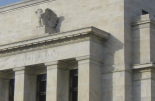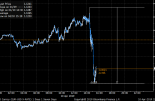La Française: All eyes on inflation

By François Rimeu, Senior Strategist, La Française AM
The course of inflation over the coming months and quarters is one of the most important subjects for the financial markets, with a lot of uncertainty about how long the inflationary pressures that we are currently experiencing will last.
Indeed, for several months now the signs of inflation have been increasing in our economies. One of the most obvious signs of this is changes in raw material prices: since the end of 2019 (i.e. before the beginning of the pandemic) the price of iron ore has increased by +133%, copper by +58% and aluminium by +33 % , and these increases have also taken place in the agricultural sector with wheat rising by 27% and corn by 54% (Source: Bloomberg). For now, these increases have mainly had an impact on production prices, but it is very likely that companies will try to pass them on to the end consumer, especially considering the currently high level of savings. Real estate markets are also experiencing strong rises in most of the developed economies, for example in the United States or in Germany where prices have risen by +12% over the last 12 months (Source: Bloomberg).
These effects are mainly linked to the monetary and budgetary measures that have been taken by central banks and governments over the past year, including across the board rate cuts (or increases in the size of balance sheets), and stimulus plans on a scale which is virtually unprecedented in the post-war period. These effects are also due to the Covid-19 crisis, with a sharp increase in the demand for goods in order to make up for the non-availability of many services.
Coupled with all this, we must also consider the very important base effects that will impact inflation figures both in Europe and in the United States. US inflation is in fact likely to accelerate sharply over the next two months, with underlying inflation expected to approach 4% and "core" inflation of around 3%; if the base effects then subside, “core” inflation (across the board price rises excluding highly volatile elements such as agricultural or energy sector raw materials) should nevertheless remain at around 2.5% up to the end of 2022, i.e. a more than adequate level for the US Federal Reserve. The European situation is different because even if there too we will see base effects pushing inflation to 2% by the end of the year, it should then rapidly fall back to around 1%.
The final factor is that some sub-components of inflation seem to being showing signs of a rebound over the next few months, e.g., the real estate component (including rents for rental investments) and also, for example, the used car market. Beyond the already high expectations, we must therefore take into account a non-zero probability that the figures may be higher than our current estimates.
This rise in inflation, coupled with extremely low real rates at the moment, should lead to an increase in US nominal rates over the coming months. We could well see the 10-year American interest rate at 2% within a few months.










